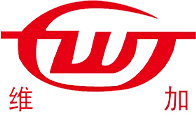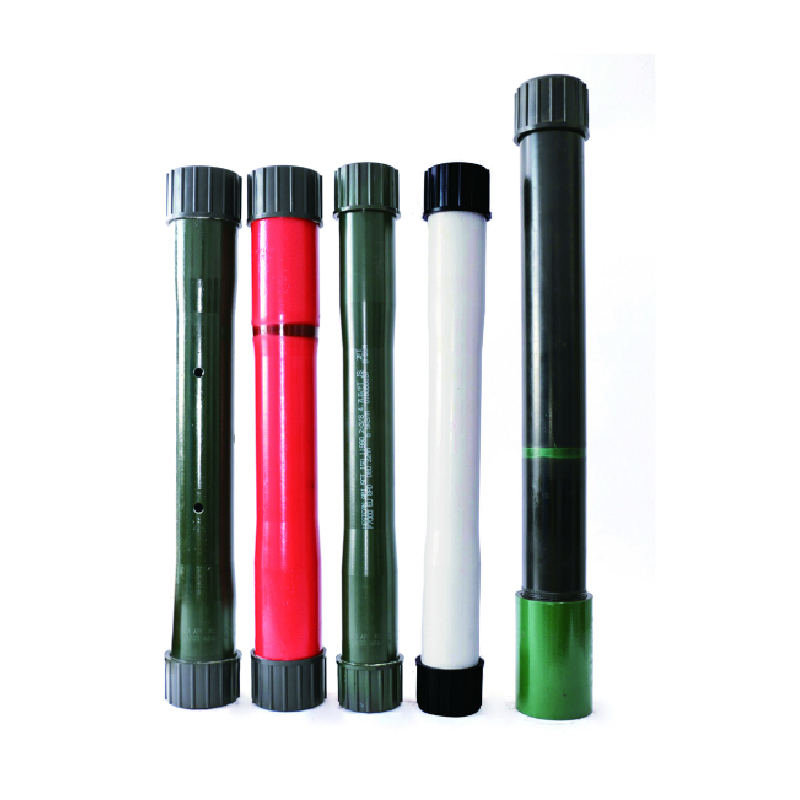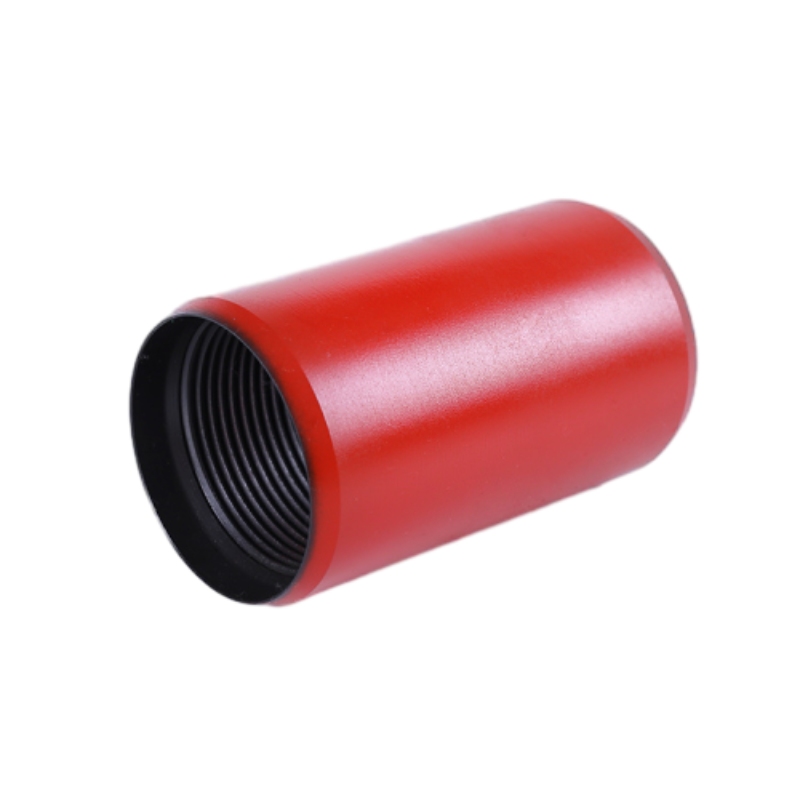Pup Joint Manufacturers: Reliable Tubing for Oil & Gas
Navigating the Landscape of Tubing Pup Joint Manufacturing
In the demanding environment of oil and gas exploration and production, the integrity and reliability of every component within a downhole string are paramount. Among these critical elements, tubing pup joints play a vital role, serving as essential connectors for spacing out tubing strings to achieve precise depths and accommodate various wellbore configurations. The selection of reputable pup joint manufacturers is therefore not merely a procurement decision but a strategic imperative that directly impacts operational efficiency, safety, and long-term cost-effectiveness. This article delves into the intricacies of pup joint manufacturing, industry trends, technical specifications, and the crucial factors distinguishing leading vendors in this specialized field.
The global energy sector's continuous evolution, marked by deeper wells, more challenging formations, and increasingly stringent environmental regulations, places immense pressure on suppliers. Consequently, modern pup joint manufacturers must not only adhere to established API standards but also innovate in materials science, manufacturing precision, and quality assurance. Key industry trends include a growing demand for high-strength, corrosion-resistant materials to withstand HPHT (High Pressure/High Temperature) conditions, advancements in threading technologies for improved seal integrity, and the integration of digital inspection techniques to ensure zero-defect components. Furthermore, the focus on sustainable practices and extended service life is driving manufacturers to develop more durable and environmentally benign product solutions, contributing to reduced operational footprint and enhanced economic returns.
Technical Specifications and Material Excellence
A tubing pup joint is a short length of tubing used to adjust the length of the tubing string. These components are typically available in various lengths, most commonly 2, 4, 6, 8, 10, and 12 feet, but can also be customized. They are manufactured to the same exacting standards as the primary tubing string, ensuring seamless integration and consistent performance. The critical parameters for any high-quality pup joint include its Outside Diameter (OD), Wall Thickness (WT), Length, End Finish (threaded connections), and Material Grade.
Materials used are predominantly carbon steels and low-alloy steels, conforming to API Specification 5CT for Casing and Tubing. Common grades include J55, K55, N80 (Type 1 and Q), L80 (Type 1, 9Cr, 13Cr), P110, Q125, and V150. For highly corrosive environments, such as those with H₂S, CO₂, or chlorides, Corrosion Resistant Alloys (CRAs) like Duplex, Super Duplex, or Nickel-based alloys are specified. The end connections are crucial for seal integrity and mechanical strength, typically featuring API EUE (External Upset End) or NUE (Non-Upset End) threads, but also premium connections designed for superior gas-tight sealing and increased torque capacity in challenging applications. Precision in thread manufacturing is paramount to prevent leakage and ensure robust mechanical locking.
Standard Tubing Pup Joint Specifications (API 5CT)
| Parameter | Typical Values/Grades | Description |
|---|---|---|
| Material Grades | J55, K55, N80 (Q, 1), L80 (1, 9Cr, 13Cr), P110, Q125, V150 | API 5CT certified steel grades, varying yield strength and corrosion resistance. |
| Outside Diameter (OD) | 1.050" to 4.500" (26.7 mm to 114.3 mm) | Common sizes for standard and slim-hole completions. |
| Wall Thickness (WT) | Varies by OD and pressure rating | Designed for specific burst and collapse pressures. |
| Length | 2 ft, 4 ft, 6 ft, 8 ft, 10 ft, 12 ft (0.61 m to 3.66 m) | Standard API lengths for spacing out tubing strings. |
| End Connections | API EUE, NUE, BTC (Buttress), LTC (Long Thread), Premium | Standard and proprietary connections for sealing and mechanical strength. |
| Manufacturing Standard | API Spec 5CT, ISO 9001 | Governs material, dimensions, testing, and quality control. |
The Meticulous Manufacturing Process of Pup Joints
The production of a high-quality tubing pup joint is a multi-stage process that demands precision engineering, stringent quality control, and adherence to international standards. Leading pup joint manufacturers employ advanced techniques to ensure the reliability and longevity of their products.
Detailed Process Flow:
- Material Sourcing and Inspection: This crucial first step involves procuring seamless steel tubing from API-certified mills. Incoming materials undergo rigorous chemical analysis and mechanical testing to verify compliance with specified API 5CT grades (e.g., tensile strength, yield strength, hardness).
- Cutting to Length: The raw seamless tubes are cut to precise pup joint lengths (e.g., 2ft, 4ft, 6ft) using high-precision saws, ensuring minimal material loss and accurate dimensions for subsequent machining.
- Forging and Upsetting (for EUE connections): For External Upset End (EUE) pup joints, the tube ends are heated and hydraulically upset to increase wall thickness. This forging process strengthens the area where threads will be cut, preventing thread stripping under high stress.
- Heat Treatment: Depending on the material grade (e.g., N80Q, L80, P110), the pup joints undergo various heat treatment processes such as normalizing, quenching, and tempering. This refines the grain structure, enhances mechanical properties (strength, toughness), and relieves internal stresses introduced during manufacturing.
- CNC Machining and Threading: High-precision CNC (Computer Numerical Control) lathes are used to machine the exterior and interior surfaces, ensuring exact dimensions, concentricity, and surface finish. The critical threading operation is performed on these machines, adhering strictly to API 5B specifications or proprietary premium connection designs. Each thread profile is meticulously checked for form, lead, taper, and standoff.
- Non-Destructive Testing (NDT): Comprehensive NDT is performed to detect any surface or subsurface defects. This includes Magnetic Particle Inspection (MPI) for surface cracks, Ultrasonic Testing (UT) for internal flaws, and Eddy Current Testing.
- Hydrostatic Testing: Each pup joint is subjected to a hydrostatic pressure test, typically to 80% of its specified minimum yield strength. This ensures the component's pressure integrity and leak resistance under operational conditions.
- Surface Treatment and Coating: The pup joints may undergo surface cleaning and phosphating. For enhanced corrosion resistance, special coatings (e.g., internal plastic coating, external protective coatings) can be applied based on client specifications and anticipated downhole conditions.
- Final Inspection, Stamping, and Certification: A final visual and dimensional inspection is conducted. Each pup joint is then stamped with relevant information (manufacturer, grade, size, serial number), and a Certificate of Conformance (COC) is issued, confirming adherence to all specified standards (e.g., API 5CT, ISO 9001).
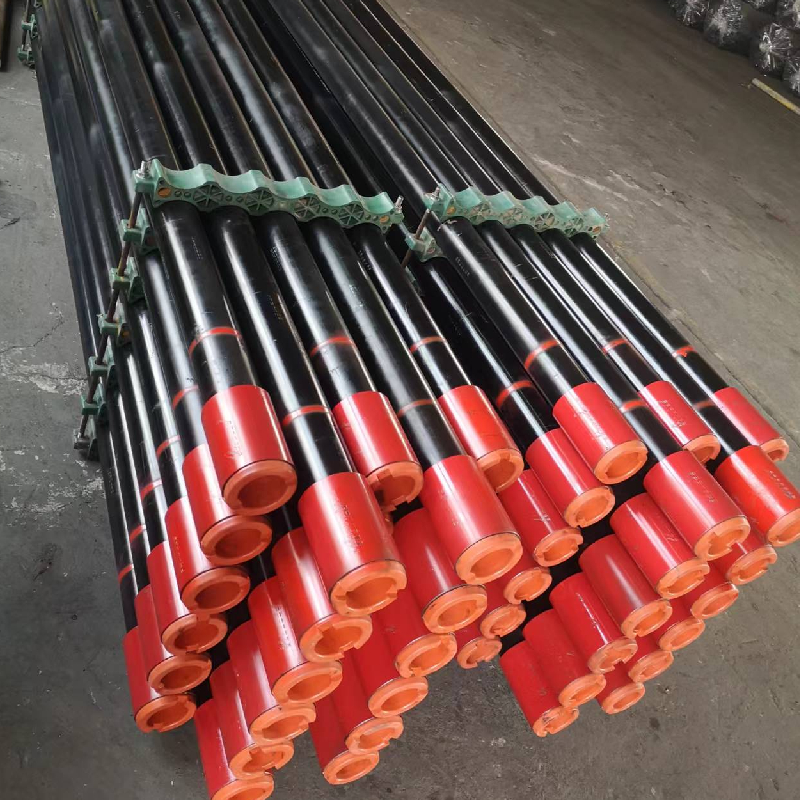
Advanced CNC machining ensures precise threading and dimensions for high-quality pup joints.
The service life of a tubing pup joint is directly correlated with the quality of these manufacturing steps, material selection, and the harshness of the operating environment. A well-manufactured pup joint can last for years, even decades, under optimal conditions. Target industries for these products are primarily petrochemical, oil and gas exploration and production (including onshore, offshore, and deepwater drilling), metallurgy (for specialized tubular goods), and water injection systems for enhanced oil recovery. Key advantages offered by superior manufacturing include enhanced corrosion resistance, high pressure rating capabilities, extended service life, and inherent energy saving through reduced need for frequent replacements and minimized operational downtime.
Application Scenarios and Technical Advantages
Pup joint oil and gas applications are diverse and critical, addressing various operational requirements in downhole completions and workovers. Their primary function is to adjust the length of the tubing string, allowing operators to achieve precise positioning of downhole tools, packers, or perforations relative to specific geological zones or casing shoes.
Typical Application Scenarios:
- Spacing Out Tubing Strings: Essential for landing the tubing string at a precise depth, accommodating the exact height of downhole equipment.
- Installation of Downhole Equipment: Used in conjunction with various tools such as packers, safety valves, or intelligent completion components, where specific length adjustments are needed to ensure proper functionality and sealing.
- High-Pressure Fracturing Operations: In unconventional plays, pup joints designed for high pressure and erosion resistance are vital for creating frac string assemblies.
- Corrosive Environments: When constructed from CRAs, pup joints are deployed in wells producing sour gas (H₂S) or high CO₂ and chloride concentrations, protecting the entire tubing string from premature failure.
- Deviated and Horizontal Wells: Their precise length control is crucial in complex well trajectories, minimizing string buckling or undue stress.
Key Technical Advantages:
- Enhanced Operational Precision: Allows for accurate positioning of downhole equipment, optimizing well performance and production.
- Superior Pressure Integrity: Manufactured to stringent API standards, ensuring robust resistance to internal and external pressures common in deep and HPHT wells.
- Corrosion Resistance: Availability in various material grades, including CRAs, provides critical protection against corrosive media, extending the life of the completion string.
- Reduced Downtime and Cost: High-quality pup joints minimize the risk of failure, leading to fewer workovers, reduced rig time, and lower overall operational expenses. This contributes significantly to long-term energy saving.
- Versatility and Compatibility: Designed to seamlessly integrate with standard and premium tubing connections, offering flexibility in well design and construction.
Vendor Comparison and Customized Solutions
Choosing the right pup joint manufacturers is a decision that requires careful evaluation of various factors beyond just price. Quality, reliability, manufacturing capability, and after-sales support are paramount for B2B decision-makers and engineers. A strong partnership with a trusted manufacturer can significantly de-risk complex oil and gas projects.
Key Differentiators Among Pup Joint Manufacturers:
| Factor | Leading Manufacturer Attributes | Implications for Buyers |
|---|---|---|
| Certifications & Standards | API 5CT Monogram License, ISO 9001:2015, NACE MR0175/ISO 15156 compliant. | Guarantees product quality, traceability, and suitability for sour service. |
| Manufacturing Precision | Advanced CNC machining, automated inspection systems, strict dimensional tolerances. | Ensures optimal thread engagement, leak-free connections, and extended service life. |
| Material Expertise | Capability to work with standard grades and specialized CRAs (e.g., Duplex, Inconel). | Offers tailored solutions for highly corrosive or HPHT environments. |
| Customization Capabilities | Ability to produce non-standard lengths, unique thread types, and specialized coatings. | Provides flexibility for complex well designs and specific operational challenges. |
| Lead Time & Logistics | Efficient production schedules, robust supply chain management, global shipping. | Minimizes project delays and ensures timely delivery to remote locations. |
| Technical Support | Experienced engineering teams, field support, detailed product documentation. | Assists in product selection, installation, and troubleshooting, enhancing project success. |
Beyond standard offerings, many projects necessitate customized solutions. Reputable pup joint manufacturers excel in providing tailored products to meet specific well conditions. This might involve producing pup joints of non-standard lengths to optimize string design, integrating proprietary premium threads for enhanced performance in critical applications, or applying specialized internal or external coatings (e.g., ceramic, high-performance polymers) to combat extreme corrosion or erosion. Collaboration with a manufacturer that possesses strong R&D capabilities and a flexible production line can unlock significant value, ensuring that the chosen tubing pup joint perfectly matches the demanding operational envelope.
Application Case Studies and Customer Experience
Real-world application case studies underscore the importance of selecting high-quality pup joints and reliable manufacturers. These examples demonstrate how superior engineering and material science translate into tangible operational benefits.
Case Study 1: HPHT Gas Well Completion in the North Sea
An operator in the North Sea faced significant challenges in completing a deep, high-pressure, high-temperature (HPHT) gas well with sour gas components. Standard API L80 tubing pup joints were failing prematurely due to a combination of stress corrosion cracking and extreme internal pressures (up to 15,000 psi) at temperatures exceeding 180°C. A specialized pup joint manufacturers provided 13Cr L80 tubing pup joints with premium gas-tight connections, specifically heat-treated to enhance resistance to sulfide stress cracking. Post-installation, the well has been in production for over five years without any reported tubing integrity issues, resulting in estimated savings of over $5 million in avoided workover costs and deferred production. Customer feedback highlighted the manufacturer's deep material expertise and precision engineering as critical to project success.
Case Study 2: Deepwater Horizontal Well in the Gulf of Mexico
In a complex deepwater horizontal drilling project, a major E&P company required extremely precise tubing string spacing to align with multilateral junctions and optimize reservoir drainage. The existing supply chain for standard tubing pup joint lengths proved insufficient for the bespoke requirements of the well design, leading to potential delays. A flexible manufacturer was engaged to supply custom-length P110 pup joints, cut to exact measurements (e.g., 3.5 ft, 7.8 ft) and equipped with proprietary robust connections designed for high torque and fatigue resistance. This customization allowed the operator to achieve optimal string geometry, significantly improving the efficiency of frac plug deployment and reducing non-productive time during the completion phase. The ability to quickly source customized solutions from agile pup joint manufacturers was lauded as a key enabler for the project's aggressive timeline.
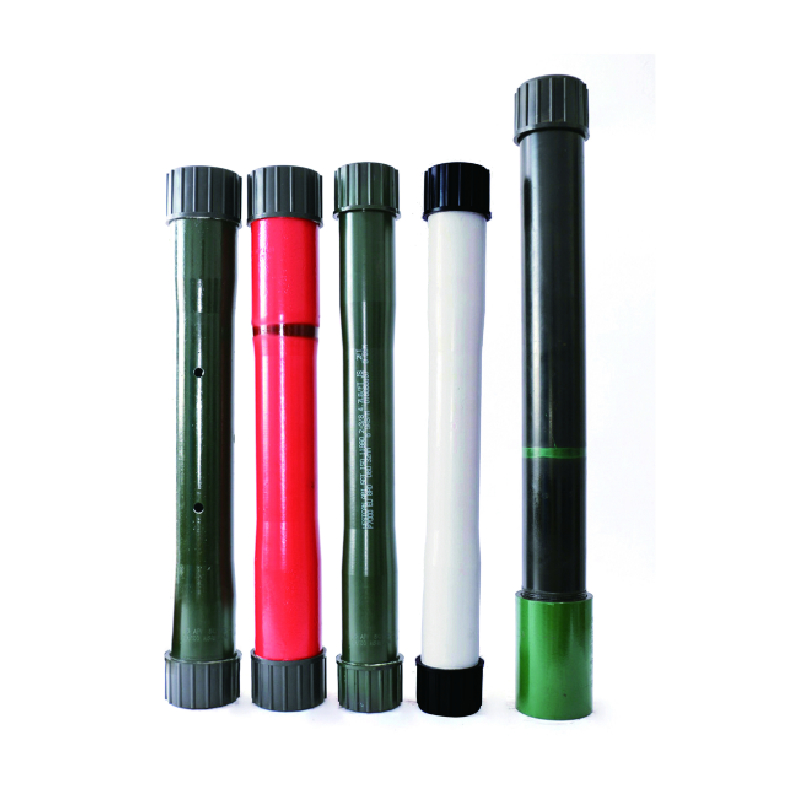
Tubing pup joints are essential for precise spacing in complex downhole completions.
Trustworthiness, Lead Time, Warranty, and Support
For B2B clients, establishing trust with pup joint manufacturers is foundational to long-term partnerships. Transparency in quality control, clear communication on lead times, robust warranty policies, and accessible customer support are crucial elements that build confidence and ensure project continuity.
Frequently Asked Questions (FAQ):
- Q: What makes a high-quality tubing pup joint stand out?
- A: High-quality tubing pup joints are distinguished by adherence to API 5CT standards, precision threading (API 5B or premium), superior material grades, thorough non-destructive testing, hydrostatic pressure testing, and complete traceability documentation. These factors ensure reliability and extended service life.
- Q: How do I select the correct material grade for my application?
- A: Material grade selection depends on well conditions, including pressure, temperature, and corrosive agents (H₂S, CO₂, chlorides). Consult with our technical team or refer to NACE MR0175/ISO 15156 guidelines for sour service environments. Standard grades like J55/K55 suffice for mild conditions, while L80/P110/Q125 are for higher strength, and CRAs for severe corrosion.
- Q: Can you provide customized lengths or special threads?
- A: Yes, leading manufacturers offer extensive customization options. We can produce pup joints in non-standard lengths and machine various premium connection threads to meet specific well design requirements. Please provide detailed specifications for quotation.
Lead Time and Fulfillment:
Standard tubing pup joint orders typically have a lead time of 2-4 weeks, depending on quantity, material grade, and current production schedules. Custom orders or those requiring specialized materials may extend to 6-10 weeks. We maintain robust inventory levels for common sizes and grades to facilitate expedited delivery when critical. Our advanced logistics network ensures efficient and reliable global fulfillment, supported by real-time tracking.
Warranty and Customer Support:
All our pup joints come with a standard 12-month warranty from the date of shipment, covering manufacturing defects and material deficiencies, provided they are stored, handled, and installed in accordance with industry best practices and our recommendations. Our dedicated customer support team and experienced technical engineers are available to assist with product selection, technical inquiries, installation guidance, and any post-sales support. We provide comprehensive documentation, including Material Test Certificates (MTCs) and Certificates of Conformance (COCs), to ensure complete traceability and compliance.
Conclusion
The role of high-quality tubing pup joints in ensuring the safety, efficiency, and longevity of oil and gas operations cannot be overstated. From precise spacing in conventional wells to withstanding extreme conditions in HPHT and sour gas environments, their reliability is crucial. Partnering with experienced pup joint manufacturers who demonstrate expertise in material science, precision engineering, and rigorous quality control is fundamental for successful project execution. As the industry continues to push technological boundaries, the demand for innovative and robust pup joint solutions will only grow, making the choice of manufacturer a critical determinant of operational success.
Authoritative References:
- American Petroleum Institute (API) Specification 5CT, "Specification for Casing and Tubing."
- American Petroleum Institute (API) Recommended Practice 5C1, "Recommended Practice for Care and Use of Casing and Tubing."
- ISO 15156 / NACE MR0175, "Petroleum and natural gas industries—Materials for use in H2S-containing environments in oil and gas production."
- International Organization for Standardization (ISO) 9001:2015, "Quality management systems—Requirements."
-
Tubing Crossover - API Compatible, Custom Sizes, In StockNewsNov.10,2025
-
Tubing Coupling | High-Strength, Leak-Proof Steel CouplingsNewsNov.10,2025
-
Wholesale API Threading Casing Coupling | API 5CT, Fast ShipNewsNov.10,2025
-
Pup Joint Supplier | API Certified, Custom, Quick ShipNewsNov.10,2025
-
Pup Joint Manufacturers | Precision Machined, Fast DeliveryNewsNov.10,2025
-
Tubing Coupling | Precision Steel, Leak-Proof, Fast DeliveryNewsNov.03,2025
